Optical Module Maintenance and Cleaning: Tips for Longevity and Performance
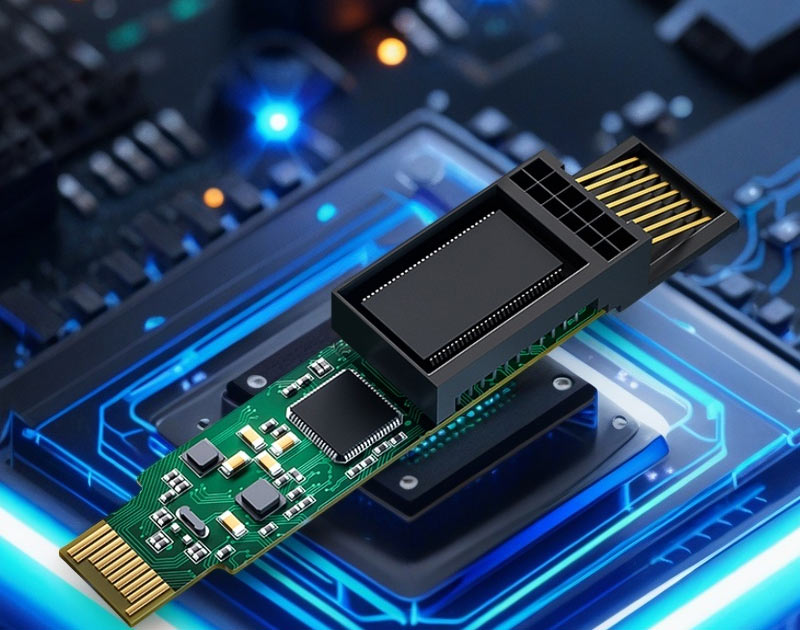
Have you ever had an unplanned network failure due to a tiny speck of dust? To the naked eye, dust particles may appear innocent, but they can have a significant impact on performance. Knowing how to clean SFP modules, performing routine SFP maintenance, and maintaining your optical module will avoid downtime and prolong the usable life of your equipment. This article will give you practical tips on keeping your modules functioning well and your network healthy.
Why Cleaning and Maintenance of SFP Modules Is Vital for Network Stability
Though dust and dirt may seem unimportant, even the smallest particles can interfere with the light signals being sent through the connectors in SFP modules. This contamination causes performance degradation due to extra signal loss or error, and possibly total link failure. Dirty optical surfaces are to data transmission, essentially, what smudges are to photography!
Without regular SFP maintenance, dirt, oily residue, and other contaminants will accumulate on optical surfaces. Over time, this will degrade the quality of the signal being transmitted and potentially shorten the effective lifespan of SFP modules, which are considerably more expensive. Using components that aren’t maintained ultimately costs network providers a great deal of time and cost associated with repairs when an operator is unable to resolve the problem ASAP.
Routine SFP module cleaning can restore the clarity of the optical signal and assist in lowering the bit error rate, resulting in smoother and more reliable connectivity. That’s somewhat like changing the oil in your car every 2000 miles — it takes just a small amount of time and effort to routinely do so, thereby preventing much more significant repairs down the line.
Also, consistent and proactive SFP maintenance contributes to improved longevity of the device as well as improved uptime of the host network. This point is especially important to note for those data centers or enterprise-level environments that require uptime of services for business continuity — neglected modules can contribute to undesirable downtime, thus impacting services and business.
At the end of the day, good practices in SFP module maintenance are basic to maintaining performance expectations, as well as avoiding failure, and maximizing a return on investment. Regularly taking the time to maintain SFP modules and prevent optical contaminants will allow your optical infrastructure to run strong.
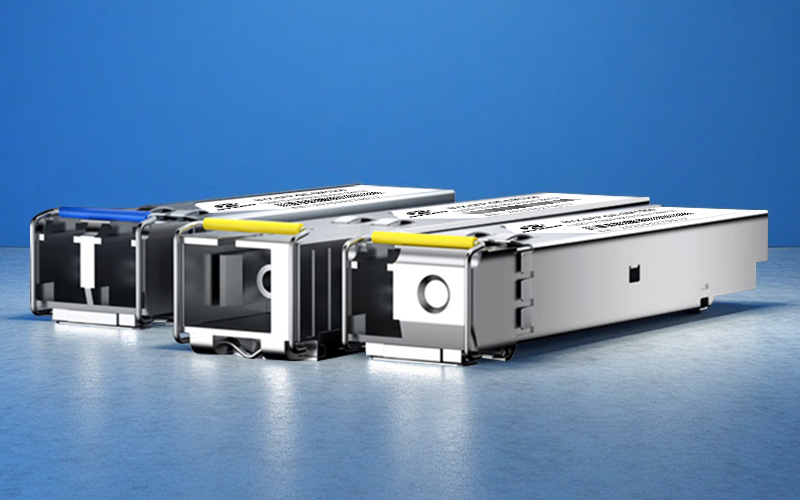
Understanding Common Contamination Types and Their Effects on SFP Modules
Optical modules encounter a multitude of contaminants; dust, oil, and chemical residues are among the worst of the experiences. Dust particles are nearly impossible to see and, instead, settle on the fiber endfaces and connectors. Dust, once in place, will hinder light transmission nearly as badly as haze on a window. Oil contaminants, which often come from human fingers or microfiber cloths used to handle SFPs, create droplets and smudges in the optical path. Oil will scatter light and reduce the overall signal strength of the end device. Chemical residues, usually from the cleaning agent itself or contaminants found in the environment, can create stubborn or semi-permanent films in the optical path. Chemical residues come in the form of actual dirt; however, they are also left as chemical residue from previous cleanings that were not rinsed properly.
More contaminants create unnecessary attenuation. This means you will lose more of the original signal while traveling through the optical system from sender to receiver. This principle can lead to higher bit error rates, resulting in potential re-transmission of data and slower speeds. Intermittent access or inconsistent connectivity to the resources stored on the server is another kind of effect of contamination. If links are being dropped suddenly, as well as their fluctuations, troubleshooting the issues becomes extremely complicated and costly.
Contaminated optical lenses or surfaces are damaging to the overall reliability of the network in the same way that a seriously dirty lens becomes useless for taking photographs. Proper fiber management and care of SFPs will greatly limit, and perhaps eliminate, all of these risks. Understanding what contaminants are doing in the optical path becomes a catalyst for establishing regular inspection and cleaning protocols — all skills needed to ensure the necessary health of the network.
Essential Tools for Effective SFP and Fiber Cleaning
To keep optical connections clean and usable, you will need the right cleaning tools developed specifically for delicate surfaces. Choosing the right tool will ensure that you can clean thoroughly using a tool that will not damage the sensitive components.
Some common cleaning tools are:
- Swabs: A small, soft-tipped stick intended for use in a manual cleaning process over connector endfaces. They come in a dry or pre-moistened version using a specialized cleaning fluid.
- Cassette Cleaners: A compact cleaning tool that guides connectors through a tape or reel in a compact enclosure to clean the fiber endfaces of dust and debris.
- Cleaning Pens: A small, convenient, and carry-sized cleaning tool with a retractable tip that has an attached tip on the end that is saturated with a cleaning solution to allow for spot cleaning.
- Wipes: Lint-free cloth that is non-abrasive and is used with a cleaning fluid to wipe the surface gently.
- Cleaning Fluids: Otherwise known as isopropyl alcohol or a cleaner specifically made to dissolve oils or oil-based residues, while leaving no harmful deposits.
Selecting the right tool depends on the cleaning task. For example, a swab and fluid can clean only the most stubborn, tough grime, while a cassette cleaner is better suited for regularly cleaning without the risk of damaging the fiber of a connector on an ongoing cleaning basis.
Safety is the most important aspect of optical cleaning of fiber. Poor technique or aggressive cleaning can scratch the connector surface and permanently diminish the quality of the connection. Be diligent and always use the cleaning tools as the manufacturer intends for you to do so.
Do not touch a clean surface with bare fingers, as this will deposit oil onto the contact surface. Try to work in a clean, dust-free location when possible to eliminate contaminants, and keep the tools stored in clean, dust-free containers when they are not in heavy use.
Joining the right combination of SFP cleaning tools with the correct technique will extend the module life and ultimately the performance of the Ethernet network it supports! Treat and clean your optical components as if they were precision lenses in order to see the best results.
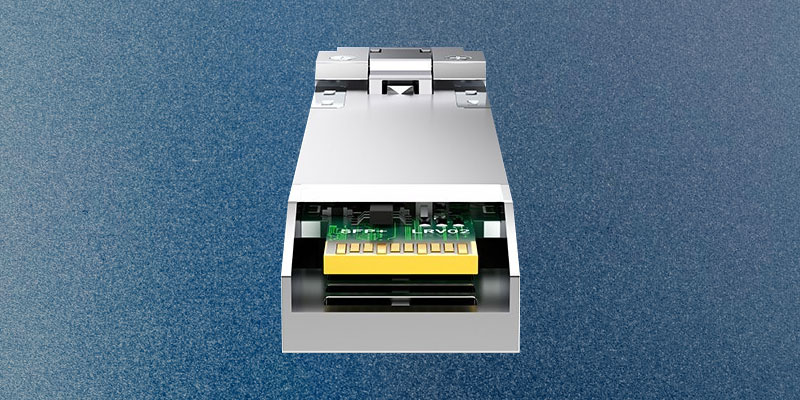
Cleaning Procedures for SFP Modules and Optical Fibers
Prior to the cleaning process, make sure to conduct an initial inspection with an inspection scope or microscope. This initial inspection helps you see contaminants that your eyes cannot, similar to how a magnifying glass exposes dirt on a camera lens before wiping.
To begin the cleaning process, gently wipe off dust and debris from the SFP module connector. It’s important to use a lint-free dry swab or a cassette cleaner so as not to scratch the sensitive surfaces of the optical pathways. If you have debris or residue left over after the dry cleaning, you can dip a swab in an approved cleaning fluid and make sure it is just damp, not wet. You don’t want the fluid to run into sensitive parts of the connector.
Next, clean the fiber endfaces separately. Fiber connectors are very delicate, and it’s important to apply only light pressure to clean the little squares (endfaces) of optics. Because of the delicate nature of the optical fiber, you can use a cleaning pen or a cleaning swab dipped in isopropyl alcohol to do so. Just as you’ll want to refrain from scrubbing the fiber endfaces too harshly, you don’t want to scrub too much, although slow and gentle pressure is required when housing the fiber connector against the cleaning tool.
Once you have completed cleaning, perform a post-cleaning inspection of the fiber connector in the same way to ensure that all contaminants have been removed and validate that the surface is clean and ready to efficiently transmit signals. If stains from debris or remains persist, make sure to clean again.
The effort put into the complete cleaning cycle has refreshed the optical pathways of the SFP module to ensure that there is a longer service life for the SFP module. Moreover, you can make a parallel comparison, such as polishing a dirty pair of eyeglasses to restore clear vision. Maintaining a clean SFP module ensures optimal network performance and improves signal integrity when maintained to spec and appropriately.
Preventative Maintenance Strategies to Avoid SFP Module Failures
Effective SFP maintenance starts with a schedule of cleaning. With regularly scheduled cleaning, dust or debris that might obstruct or even affect signal quality will be prevented from building up. Having a routine cleaning schedule will help ensure that the modules are running efficiently, which will, in turn, help reduce unnecessary downtime.
Environmental control is also a major factor in SFP care. Maintaining humidity and temperature at stable levels will help prevent condensation and help degrade materials inside the optical modules. This is similar to storing certain electronics. If you leave electronics in extreme humidity or temperature for extended periods of time, it will affect longevity and performance.
Similar to environmental control, there is a way to minimize contamination through proper handling. For example, the endfaces of an FC and LC connector should not be touched with bare hands because oils from, e.g., your fingers can contaminate the connectors. If you are not going to use a module, you should either store it in a dust cap or in a sealed container in order to help reduce airborne particles in/around stored optical modules.
You can also take a more proactive approach to SFP maintenance through firmware updates. Think of it as ‘bug fixes’ that speed up performance and resolve delays/other issues. At a more controlled level, through the management interface, you can keep an eye on the health of your modules, which will allow you to identify any slight changes in performance before failure occurs.
When you can fuse and add these types of SFP care/maintenance practices together, you will have developed a strong defense against common causes of failure. You can think of it similarly to the way we, as humans, care for our health by having routine checkups and assessments done in order to stay well over time – treat your optical components with similar care and attention, and your network should stay stable and reliable.
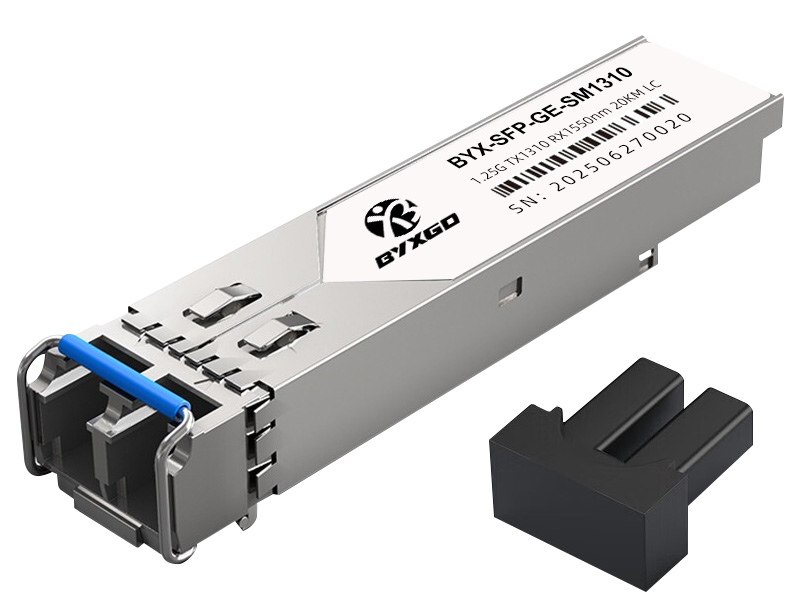
Impact of Cleaning on Optical Signal Integrity and Module Longevity
Empirical evidence corroborates the significant impact of an unclean SFP module on performance. Signal strength improves substantially with proper cleaning. The same occurs for bit error rate (BER). Each improvement increases the stability of data that is transmitted without errors.
Testing shows comparative measurements between modules prior to cleaning and then after cleaning, with signal attenuation showing a reduction of up to 30%. A decrease in signal attenuation leads to a reduced risk of needing to retransmit data or packets and will increase effective throughput. With periodic cleaning, an SFP module acts as a barrier to performance losses associated with contaminated surfaces.
Additional data suggests the cleaned SFP module will achieve maximum performance for a longer period of time than an unclean module, effectively increasing its useful life.
Dirt and residual buildup usually lead to wearing and premature failures. Cleaned modules shouldn’t operate at a thermal disadvantage because the contaminants have been removed, adding to the module’s durability by not sustaining thermal stresses inside the module.
A summarized chart of the lab results is shown below:
| Metric | Before Cleaning | After Cleaning | Improvement |
| Signal Strength (dBm) | -17 | -12 | +5 dB |
| Bit Error Rate (BER) | 5×10^-6 | <1×10^-9 | >99% reduction |
| Module Lifetime (Hours) | 18,000 | 25,000 | +39% |
The charts really reveal the differences in performance metrics and undeniably demonstrate the importance of regular maintenance cleaning in an SFP maintenance program. This SFP test data proves the point that the time spent on cleaning restores the integrity of the signal as well as reliability over time, and in doing so provides a value return on your optical module investment. Think of maintenance cleaning as the process of sharpening a tool: the tool is better maintained, and the tool will last longer and work more effectively.
Network Stability Restored Through Rigorous SFP Module Cleaning
A medium-sized company was undergoing constant link failures that interrupted essential applications. Even though they had invested in hardware upgrades, they continued to experience outages, though only occasionally. As a solution, the technicians took a close look at the SFP module endfaces and were appalled by the amount of contamination they discovered. The observed contamination was degrading the signal integrity and causing the link failures.
With the introduction of a comprehensive SFP maintenance program centered on routine cleaning of the SFP connector ends with specific SFP cleaning tools, they began to turn things around. They used cassette cleaners, non-woven lint-free swabs, and high-quality fiber cleaning solvent to purge dust and residue from the fiber connectors and endfaces.
The cleaning was performed on a regimented schedule and utilized a visual inspection microscope before cleaning and after cleaning to ensure the cleaning was thorough. This disciplined approach achieved its goal of recovering signal integrity within the fiber SFP modules and, in turn, regained optimal operational signal strength, reduced the bit error rate on fiber optic links, and stabilized the previously degraded link failures.
After cleaning and documenting the SFP modules through post-maintenance reports, the end user noted they had experienced a more than 90% improvement in link reliability. Since the reduced contribution of exposure and contamination of these SFP modules, there had been almost no link failures.
The organization not only improved link reliability and user experience but has since extended the life of the SFP modules with lower operational costs when replacing the modules, which meant an increase in operational budgets for other purposes.
This case study illustrates the impact regular cleaning and maintenance procedures can have on your SFP modules. As stated and demonstrated, simply performing preventive cleaning of the SFP modules is a worthwhile task to avoid regular inconvenient link failures. The benefit of superior cleanliness and maintenance of the connectors also increases the overall performance of your network, which greatly affirms the value of preventive cleaning.
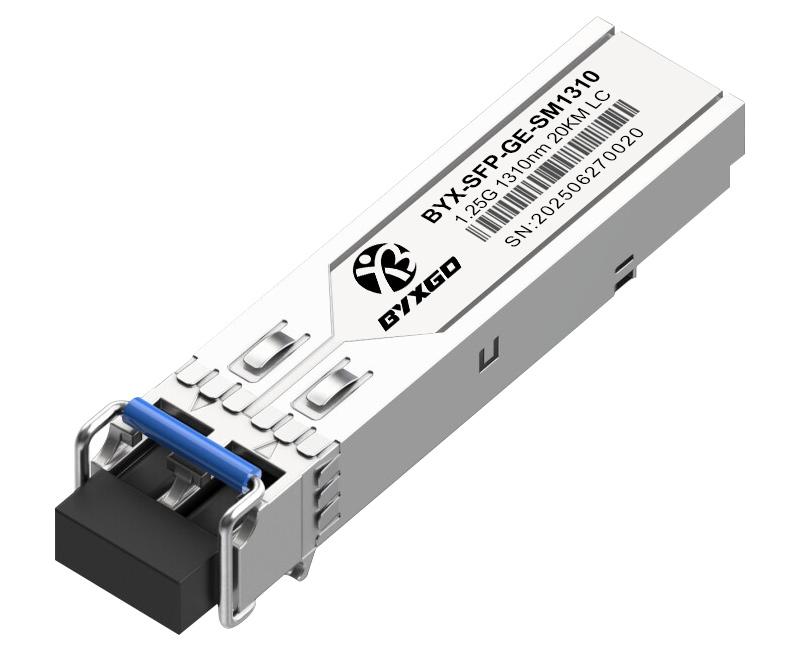
FAQs
How often do SFP modules and fiber connectors need to be cleaned?
Their cleaning is recommended prior to first use and as part of a normal maintenance routine, usually once every 3-6 months, depending on the environment.
What are the best cleaning tools for sensitive optical connectors?
The common consensus is to have some lint-free swabs, cleaning cassettes, cleaning pens, and isopropyl alcohol crystals to clean SFP modules safely and effectively.
Can improper cleaning damage SFP modules?
Yes, abrasive scrubbing or solvents can actually etch surfaces or leave residues that can hinder signal transmission.
How do you know cleaning would improve a failing link?
Frequent link errors, brief lag time, or speed sometimes surging and sometimes not may signal contamination, which cleaning would help address.
What are some common signs to determine if there is a need for cleaning in an optical network?
Some signs would be dirt visible on inspection scopes, repeated disconnects, or elevated bit error rates.
Are there standards or certifications to address cleaning SFP modules or connectors?
Yes, there are IEC criteria, as well as company-specific recommendations, that will help gather accurate methods to clean SFP modules and optical connectors to maintain the integrity of the module.
What is the proper handling of SFP modules while performing maintenance?
To properly handle SFP modules, use clean hands or gloves when connecting/disconnecting, do not touch the endfaces of the connector, and always place dust caps back on endfaces when disconnected from terminals.
Do cleaning practices extend the warranty of your modules or lower replacement costs?
Conducting proper maintenance will usually extend the usable life of modules, which generally reduces failure rates over time. Reduced failures can lower replacement/repair costs.
What is the difference between cleaning SFP modules and fiber cables?
Time is the main difference, as the SFP modules only require a quick cleaning of the connector endface, while fiber cables have to have clean connectors at both ends, and if not cleaned, the fiber as well.
Will cleaning modules help with compatibility or operational recognition?
Contaminated connectors may have impaired communication, which could cause the appearance of the modules not being compatible. Cleaning the connectors will often return the contact performance to its optimal state.
This FAQ on SFP troubleshooting & cleaning helps provide answers for some of the more frequent questions of that nature, with direct and actionable answers for better maintenance decisions and reliability of your optical networks and devices.
Conclusion
Cleaning SFP modules periodically reduces errors and effectively lowers the likelihood of optical downtime by keeping optical paths clear. Essential SFP maintenance assists in extending device usability and maintaining network reliability. Regular overall module maintenance, combined with expert opinions and recommendations, will maintain the best optical module station performance over time. Timely optical maintenance saves critical infrastructure and will preserve your return on investment.
